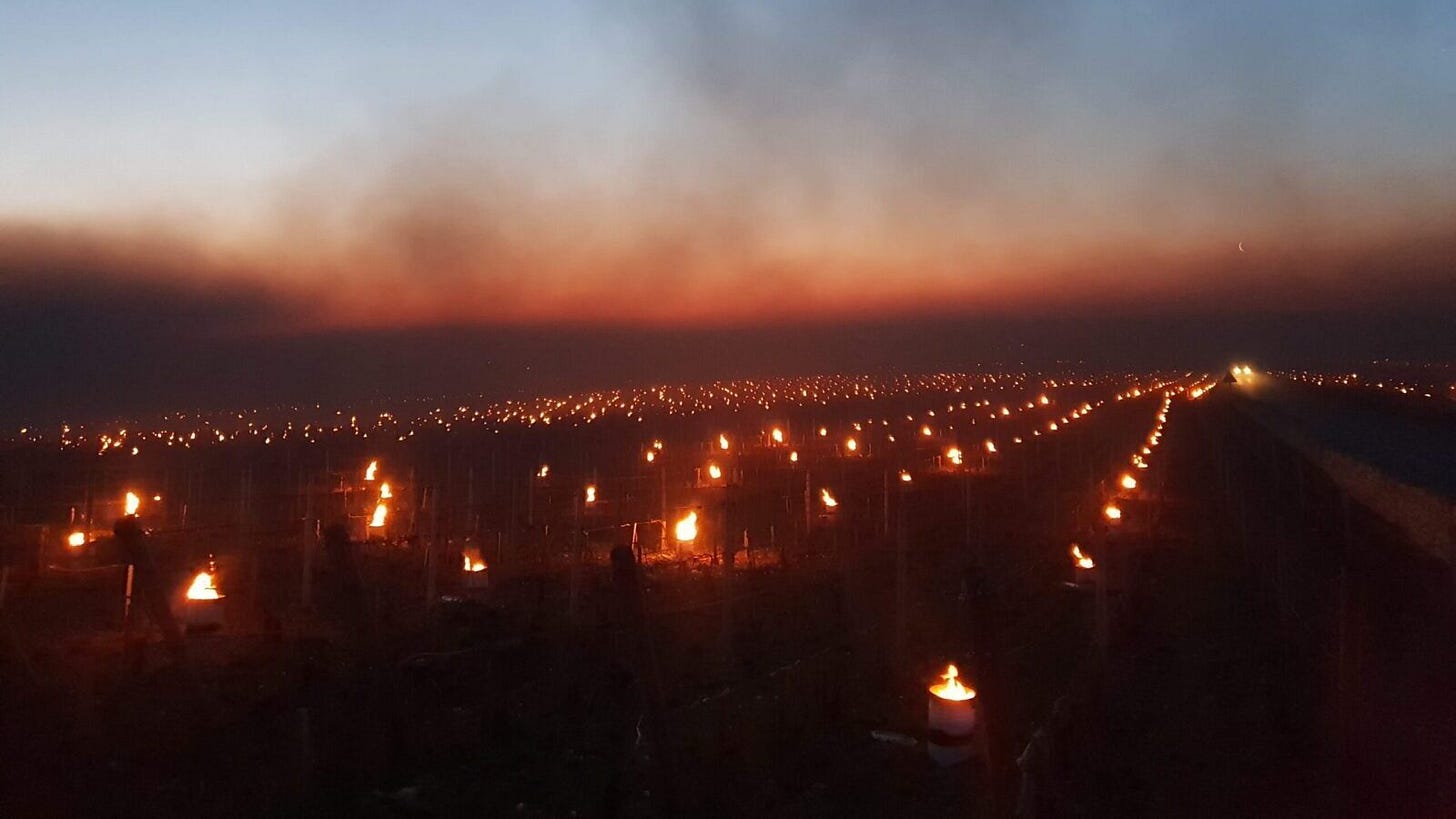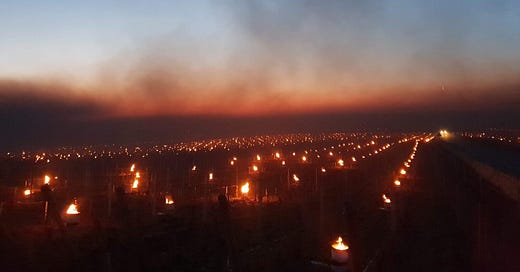Between the frost and a hard place
Hannah reflects on the April frost that has wiped out up to 80% of France's wine for 2021

Climate change is planting Syrah in the Loire and -8°C frost in April in the Roussillon. It’s harvest one week earlier than last year - every year - and picking grapes at dawn. It’s summers so hot the vines shut down, and winters so mild that parasites stay alive and the vines can't rest.
There’s mildew where there should be winds and drought where it used to rain. It’s farmers, not bankers, getting bailed out; and as rising temps lead to new strains of bacteria in the vines and higher pH levels in wine, more and more bottles with mousy taint. It's what happened this month in France: devastation caused first by the unseasonal heat, then the frost.
While the effects of a one degree increase in average annual temperatures might be too subtle for us beyond mild surprise we can eat outside in February, for the vines, it’s causing chronic stress. Harvest records from Beaune starting in 1354 show that while temperatures swung from the highs of the Medieval Warm Period to Little Ice Age lows, …
Keep reading with a 7-day free trial
Subscribe to The Morning Claret to keep reading this post and get 7 days of free access to the full post archives.




